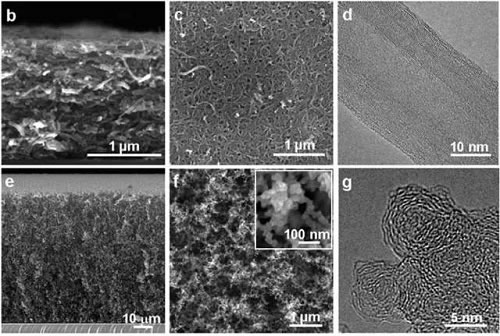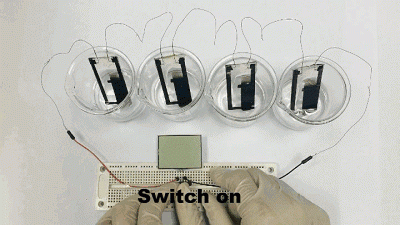Water evaporation is a natural phenomenon that is more common in life. Water absorbs heat energy from the surrounding environment and changes from liquid to gaseous. Primary students can clearly explain the principles here. Scientists are more concerned about, such as the energy transfer process behind the phenomenon of water evaporation, and how to use this energy transfer. Previously, there have been research groups applying this phenomenon to the synthesis of nanostructures (Adv. Funct. Mater., 2009, 19, 1759) and the production of energy harvesting devices (Nat. Nanotech., 2014, 9, 137; Nat. Commun. 2015, 6, 7346). A few days ago, Chinese scientists made new breakthroughs in this area. Professor Zhou Jun of Huazhong University of Science and Technology and Professor Guo Wanlin of Nanjing University of Aeronautics and Astronautics have found that the evaporation of water on the surface of nanostructured carbon materials can generate voltage. With the help of inexpensive carbon black sheet materials, they use water evaporation to generate a sustainable voltage of nearly 1V at room temperature. On January 30, 2017, relevant research results were published in Nature Nanotechnology magazine.

Professor Zhou Jun (left) and Professor Guo Wanlin (right)
The researchers first printed two electrodes made of multi-walled carbon nanotubes on a quartz substrate, followed by a simple ethanol flame to grow a carbon black sheet between the two electrodes, followed by annealing and plasma treatment, and finally epoxy. The resin was encapsulated to obtain a device consisting of two multi-walled carbon nanotube electrodes and a carbon black sheet layer.

The production process of the device. Image source: Nature Nanotech.
It can be seen by electron microscopy that the thickness of the carbon black sheet in the device is about 70 μm and consists of onion-like nanoparticles with a diameter of about 20 nm. It can be seen under the high magnification electron microscope that these particles are essentially loosely packed irregular graphene sheets and are porous. Annealing and plasma treatment, on the other hand, introduce a rich functional group to the surface of the carbon black, while making it hydrophilic.
Then, the researchers immersed the device partially in deionized water and surprisingly found that open-circuit voltages could be generated between the two electrodes at room temperature and gradually increased to 1V. In an 8-day experiment, the open-circuit voltage of the device can be stably maintained at about 1V, and the short-circuit current is about 150nA.

Electron microscope representation of the device. Image source: Nature Nanotech.
The researchers further confirmed that the sustainable voltage is caused by the evaporation of water on the carbon black sheet and that the mechanism of electricity production is the interaction between water molecules and carbon materials, especially the water flow in porous carbon membranes caused by evaporation. Through computational simulations, Fourier transform infrared spectroscopy, and X-ray photoelectron spectroscopy, the researchers found that the functional groups introduced by annealing and plasma treatment play a key role in generating electricity.

Evaporation of electricity generation diagrams using water. Image source: Nature Nanotech.
Subsequently, the researchers confirmed the mechanism of electricity production through experiments. Since the continuous evaporation of water causes water to flow into the porous carbon black sheet, that is, the electrolyte solution flows on the charged insulating surface, an electric phenomenon will occur. Scientists call it the flowing potential.
Finally, the researchers could easily increase the output voltage to 4.8V by building a simple series device and successfully power the LCD screen.

The tandem device powers the LCD screen. Image source: Nature Nanotech.
The researchers mentioned that the use of vibration energy, solar energy, wind energy, ocean energy and other power generation must rely on the corresponding complex environment, and the use of water evaporation energy can directly convert the thermal energy in the room temperature environment into electrical energy. Compared with the traditional flow potential generated by the use of external pressure gradients, temperature gradients or chemical concentration gradients, this method uses natural phenomena to produce electricity without the need for external mechanical action and energy input.
Researchers plan to design more powerful devices to perform such tasks as sterilization, water purification, and desalination.
Disposable Mask Medical Supply,Disposable Medical Masks,Disposable Coronaviruses Mask,3-Ply Face Mask
Guangdong Jia Mei Biological Technology Co.Ltd , https://www.jaymeimask.com
